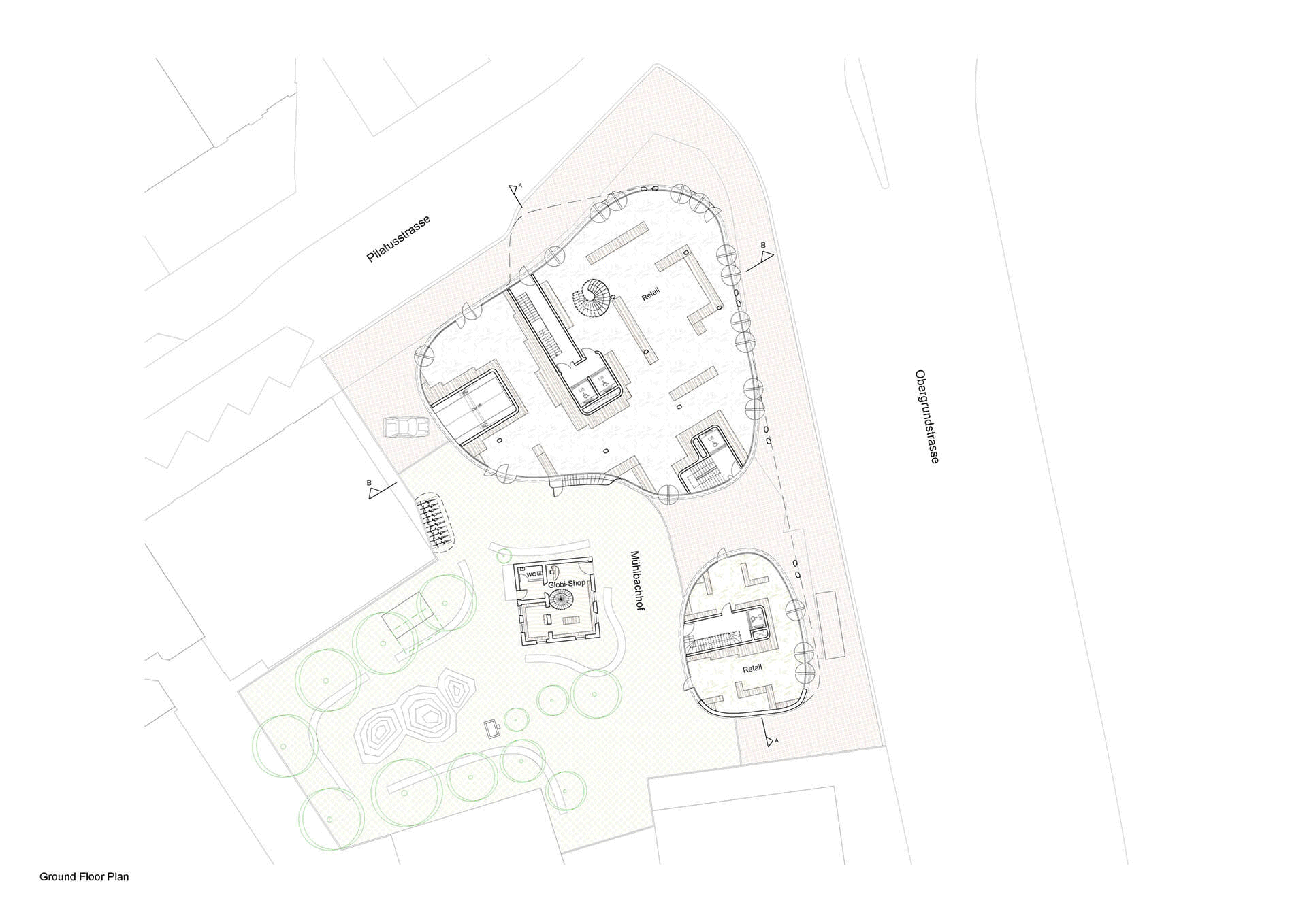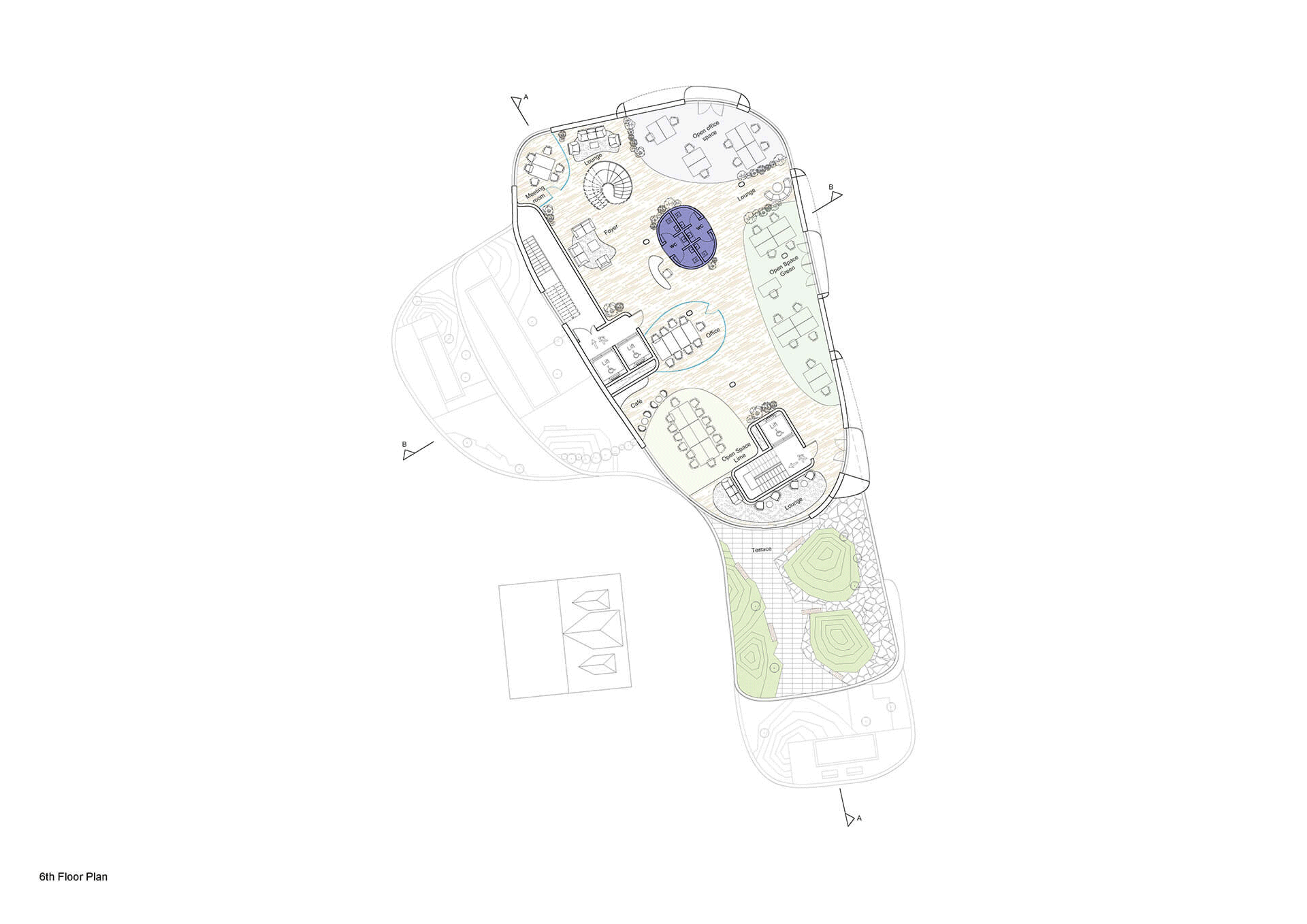The Tower of Life by BAD grows as an empathetic, self-sustaining tower in Senegal
by Jincy IypeMay 13, 2022
•make your fridays matter with a well-read weekend
by Anmol AhujaPublished on : Jan 12, 2021
Submitted as a proposal to enliven the Pilatus Square in the city of Lucerne, Switzerland, as part of a public competition held by the Lucerne Municipality and commissioned by TC Holding AG, the Alpen-Akelei Haus designed by SIAMAK Living Architecture (SLA) is evocative of a binding relationship between man and nature. As the Zurich-based firm’s working ideology itself, the building too aspires to a method and belief of healthy living through architecture that looks to the future, but is rooted in and seeks inspiration from the natural world. In this particular case: a petal of the Alpen-Akelei, or Alpine Granny’s Bonnet. Literal inspiration is sought from a delicate, primary form of a flower petal and manifested in the structure and elevation of the proposed mixed-use building through what can only be stated to be a dichotomous relationship: using advanced software and state-of-the-art data driven computations and algorithms.
According to the designers at SLA, the continuity and congruence of the natural form of their muse, the eponymous Alpen-Akelei petal lent itself conveniently, and organically, to create mathematical computations that were both “related and continuous”. The natural inspiration doubles up not only in form but also in envisioning the building itself as a hybrid, composite, complex functioning organism, in interaction with its environment, and informed by its “skin”, its material. The brief for the project was to create an attractive commercial and residential building on the Pilatusplatz, offering long-term usage options in terms of economic sustainability to its occupants, intending to take account of the prominence of the location and value of the project as a beacon of urban identity and value-driven investment.
Access to the holistically designed development is guided through a landscaped cluster in the heart of the city, providing pedestrian right of way through the green open public space. The Alpen-Akelei building is infused with smart technologies, from the front door to the glass façade and everything in between. Opt-in facial recognition technology removes the hassle for staff entry and QR entry codes sent with visitors’ meeting invitations overcome the traditional problems of the reception desk queue, streamlining the process of guiding visitors to their destinations. The building mass is offset from its on-ground footprint, as a retail podium housing commercial spaces narrows to form residential towers above it, leading to the creation of several recreational terraces. The summit of the building houses rooftop cafes and eateries with the free-to-public-access external terrace providing a wonderful vantage point to the city.

The architectural concept of the building, that of the Alpen-Akelei petal, is able to comprehensively and inclusively lend itself to three distinct, important building elements: the structure, and the façade in its organisational as well as ornamental form, the latter being reminiscent and evocative of blooming flowers, crystallised here to also hold the building and its glazed podium front in place. Along with forming a vertical, visual link between the lower levels and the residences above, the V-shaped gates along the façade are an integral part of the building structure. The building aptly avoids the monolithic qualities frequently associated with high rise blocks, with the façade of the Alpen-Akelei being broken up by means of variations in texture, depth, the placement of balconies, and the recumbent rhythm of its curved vertical frames. In contrast to the apparent solidity of the residential blocks above, the nearly fully glazed retail units below coupled with the vertical V frames seek to create the illusion of “carrying the building, as if the whole block has the potential to float”.

Apart from the structural elements in the facia, the building employs an innovative and efficient structural system that consistently separates the primary and secondary structure based on the “tube-in-tube” principle common to steel construction: except that here, the same is planned to be achieved through a timber hybrid. The overall construction of the Alpen-Akelei building develops on top of a concrete basement and includes two access cores, also built of concrete. The columns and beams of the main supporting structure are made of high-strength and load-bearing beech plywood while those on the façade side are made of spruce/fir. The thermally activated ceilings are made of an innovative wood-concrete composite. The façade’s prefabricated elements housing the triply glazed front of the building are constructed in timber too, and clad with non-combustible material in accordance with local fire laws. The building furthers its natural pedagogy with a rammed earth and Bianco Verona natural limestone finish.
Intended to be a carbon neutral and net-zero building in its operation, the Alpen-Akelei Haus discards notions of “injected sustainability” as discussed in the firm’s ideology by its founder, Siamak G Shahneshin, and intends to wholly embrace it in its being. Solar energy, several dynamic earth storage facilities and an energy network form the basis for achieving its “Zero-Zero” goal. Featuring a majority of its structural elements “assembled” using “dry” construction methods, and prefabricated elements crafted in ecologically friendly timber apart from active utilisation of recycled building materials, the building also embraces thermal efficiency and occupant comfort holistically in its design. Prefabricated, self-supporting sanitary room units are used as bathrooms, while the MVRH system for HVAC (mechanical ventilation with heat recovery) ensures efficient operation along with excellent indoor air quality. While loads, room heights, surfaces and installations may be specific, the floor plan is designed to be flexible. In this respect, the remaining area is freely playable. As an interesting proposition that melds tradition and modernity, nature and man, the building, even as theoretical discourse, lives up to the adage in the opening of its official release: “If the ancient city concerned religion, while the modern city concerns capital and power, the city of the future should concern people and nature”.
by Bansari Paghdar Oct 16, 2025
For its sophomore year, the awards announced winners across 28 categories that forward a contextually and culturally diverse architectural ecosystem.
by Mrinmayee Bhoot Oct 14, 2025
The inaugural edition of the festival in Denmark, curated by Josephine Michau, CEO, CAFx, seeks to explore how the discipline can move away from incessantly extractivist practices.
by Mrinmayee Bhoot Oct 10, 2025
Earmarking the Biennale's culmination, STIR speaks to the team behind this year’s British Pavilion, notably a collaboration with Kenya, seeking to probe contentious colonial legacies.
by Sunena V Maju Oct 09, 2025
Under the artistic direction of Florencia Rodriguez, the sixth edition of the biennial reexamines the role of architecture in turbulent times, as both medium and metaphor.
 surprise me!
surprise me!
make your fridays matter
SUBSCRIBEEnter your details to sign in
Don’t have an account?
Sign upOr you can sign in with
a single account for all
STIR platforms
All your bookmarks will be available across all your devices.
Stay STIRred
Already have an account?
Sign inOr you can sign up with
Tap on things that interests you.
Select the Conversation Category you would like to watch
Please enter your details and click submit.
Enter the 6-digit code sent at
Verification link sent to check your inbox or spam folder to complete sign up process



by Anmol Ahuja | Published on : Jan 12, 2021
What do you think?